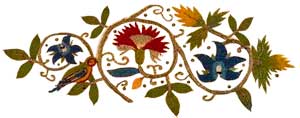 My connection to Shakespeare’s England remains strong, but for now the focus has shifted to the Bronze Age. Serpent Visions, a Novel of Teiresias brings to life the myth of that gender-changing seer in pre-Homeric Greece. During this pre-literate era, epics were passed on orally, and Teiresias’ story apparently was first written down in the lost Thebiad. Remnants have surfaced, but mainly we know the story from Greek tragedies of the fifth century BC, particularly Sophocles’ three Oedipus plays, Aeschylus’ Seven Against Thebes and, to lesser extent, Euripides’ Phoenician Women. The story fascinated many playwrights, for numerous titles of lost plays have appeared in other’s writings.
My connection to Shakespeare’s England remains strong, but for now the focus has shifted to the Bronze Age. Serpent Visions, a Novel of Teiresias brings to life the myth of that gender-changing seer in pre-Homeric Greece. During this pre-literate era, epics were passed on orally, and Teiresias’ story apparently was first written down in the lost Thebiad. Remnants have surfaced, but mainly we know the story from Greek tragedies of the fifth century BC, particularly Sophocles’ three Oedipus plays, Aeschylus’ Seven Against Thebes and, to lesser extent, Euripides’ Phoenician Women. The story fascinated many playwrights, for numerous titles of lost plays have appeared in other’s writings.
The story of ancient Thebes is significant in the second part of my novel, but the focus in on Teiresias’s gender change as told in the Metamorphoses by the Roman poet Ovid.
In the woods Teiresias strikes apart two coupling serpents and is transformed into a woman. Seven years later she again strikes apart a pair of mating serpents and returns to manly form. Soon after Jove and Juno are arguing on Mount Olympus: who enjoys the sexual embrace more, man or woman? They summon Teiresias, who’s known both bodies, to settle the question. When he replies ‘Woman,’ Juno (Hera to the Greeks) strikes him blind. Unable to reverse another god’s action, Jove (Zeus) gives Teiresias the compensating gift of prophecy, and so he becomes the blind seer living outside the walls of Thebes when the tragedy of Oedipus unfolds. The many questions raised by Ovid’s brief account inspired my novel.
The Metamorphoses is topic of my first blog post on the new site, genderandgreekmyth.com. It can be found on https://genderandgreekmyth.com/2023/02/ovid’s-metamorphoses/
Future posts will appear on genderandgreekmyth.com.
